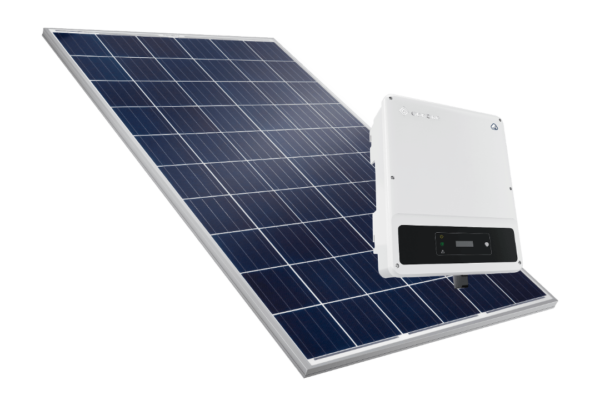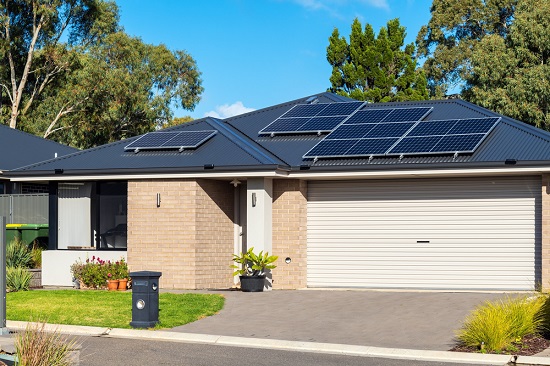A solar inverter is part of a solar power system that converts solar power into a utility frequency alternating current. It is also referred to as a PV inverter.
Solar inverters convert direct current generated from solar panels to alternating current, DC to AC. Alternating current (AC) passes through in both directions of the electrical circuit as the voltage alternates from positive to negative. AC is used at home to power electronics, heaters, light fittings and other appliances.
An ideal solar inverter should maximise the energy collected by the solar panel and efficiently convert DC to AC for grid consumption. However, when selecting a best solar inverter for your home, there is a lot to consider. Here are some of the highly recommended types of solar inverters available on the market.
Hybrid inverters
A hybrid solar inverter is a blend of a battery inverter and solar inverter. The inverter can manage power from your utility grid, solar panel, and solar batteries. Furthermore, a hybrid solar inverter can convert the direct current into alternating current while transmitting any excess natural current power to the solar battery for storage or the council grid for sale. When the stored energy is in need, the inverter can convert the direct current electricity from the batteries to AC. The hybrid inverter is one of the most advanced options on the market and the most popular for modern solar power systems.
The inverter saves expenditure on a separate battery inverter system and reduces points of inefficiency. Therefore, if you have a solar battery, the inverter is the most recommended system as it covers all the functions required for the solar system.
String inverters
This is the most popular inverter for several reasons. Firstly, the string inverter installation process is easy; the device can be wall-mounted in any room and has a simple wiring configuration. Secondly, maintenance is simple, as troubleshooting procedures are kept to a minimum, and the design is easy to navigate. Thirdly, the inverter works well in extreme climatic conditions and has high durability.
String inverters have also been around for decades; therefore, they are dependable. Moreover, many electricians are familiar with the technology making repairs fairly straightforward. As for the costs, string inverters are relatively cheaper than other inverters. Moreover, many technological advancements have made it possible for the string inverter to connect to wifi; therefore, you can monitor the solar system performance remotely.
Unfortunately, the singular connection of the string inverter to a solar panel system doesn’t allow monitoring of individual panel performance. Moreover, if one inverter breaks down in the connection, it will jeopardise the entire system’s function. As a result, it is not advisable to use this inverter if you are operating multiple panels with varied outputs.
Micro inverters
A solar micro-inverter, like other inverters, converts direct current transmitted by one solar module to alternating current. They are mounted straight to each panel on the roof. Therefore, direct current is captured from each solar panel, changed to alternating current, and then directly sent to the fuse box and electric grid without passing through a common inverter. This makes the solar panel system more efficient since breakdowns don’t compromise the final output; each system works independently. Moreover, monitoring is done at the panel level. Therefore, any issues with output are diagnosed accurately and efficiently.
Micro inverters are also reliable in extreme climatic conditions. They enhance safety by instantly converting direct current to alternating current and eliminating the dangers accrued to high voltage direct current electricity exposure. Although costly, you can install more solar panels using this inverter and maximise power output. The inverters are also ideal in areas with unreliable solar hours and comprehensive shade cover where efficiency is paramount.
In conclusion, choosing the best solar inverter depends primarily on your needs and your budget. However, you must ensure that your solar inverter’s watt capacity matches or is slightly above your solar system watt rating. This offers a safety net for output surges. Moreover, when installing your inverter, it’s advisable to store it in a cool environment to maximise its efficiency. Although the attic looks like the best place for the inverter, experts recommend accessible spaces for troubleshooting and repairs. However, some inverters are inherently installed close to the panel as a design requirement.
Finally, getting expert input on the selection and installation of an inverter is crucial. There are some technical considerations that only an expert can bring to light. Moreover, safe installation requires professional hands.








